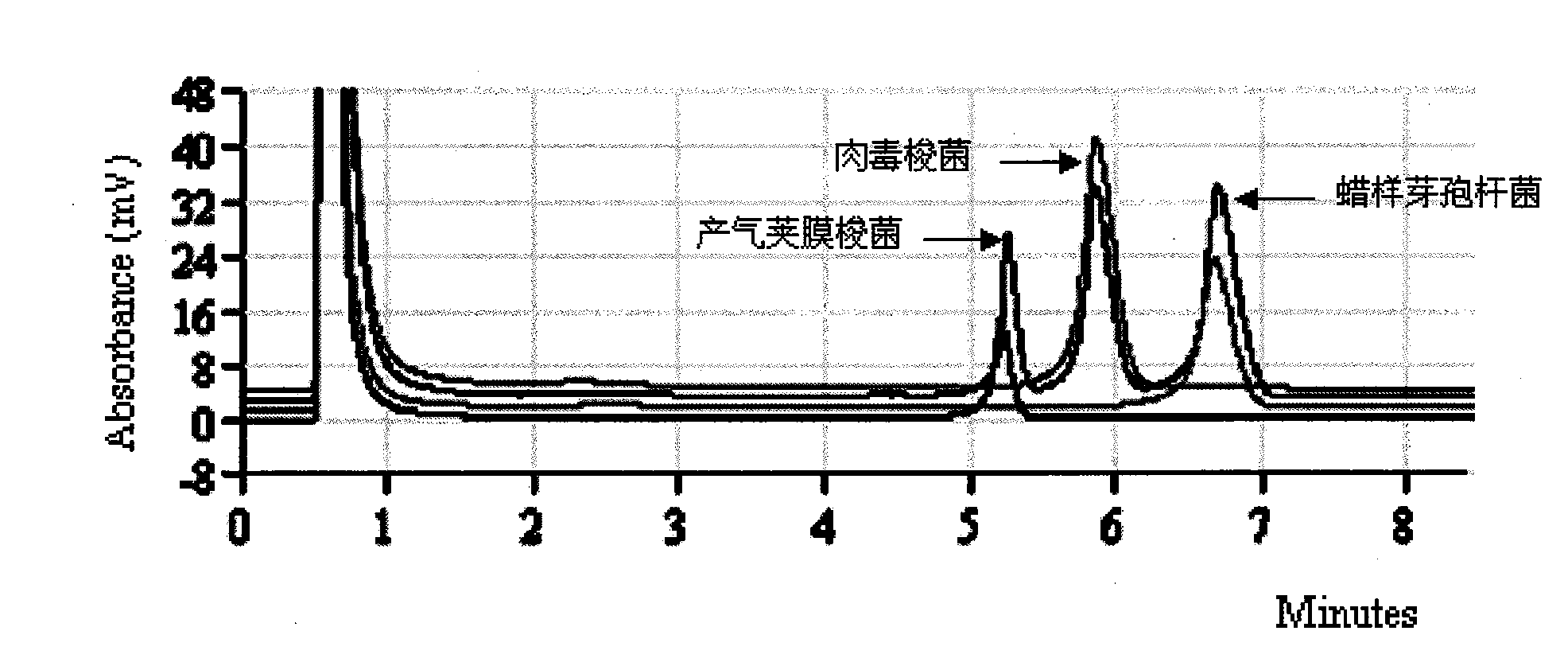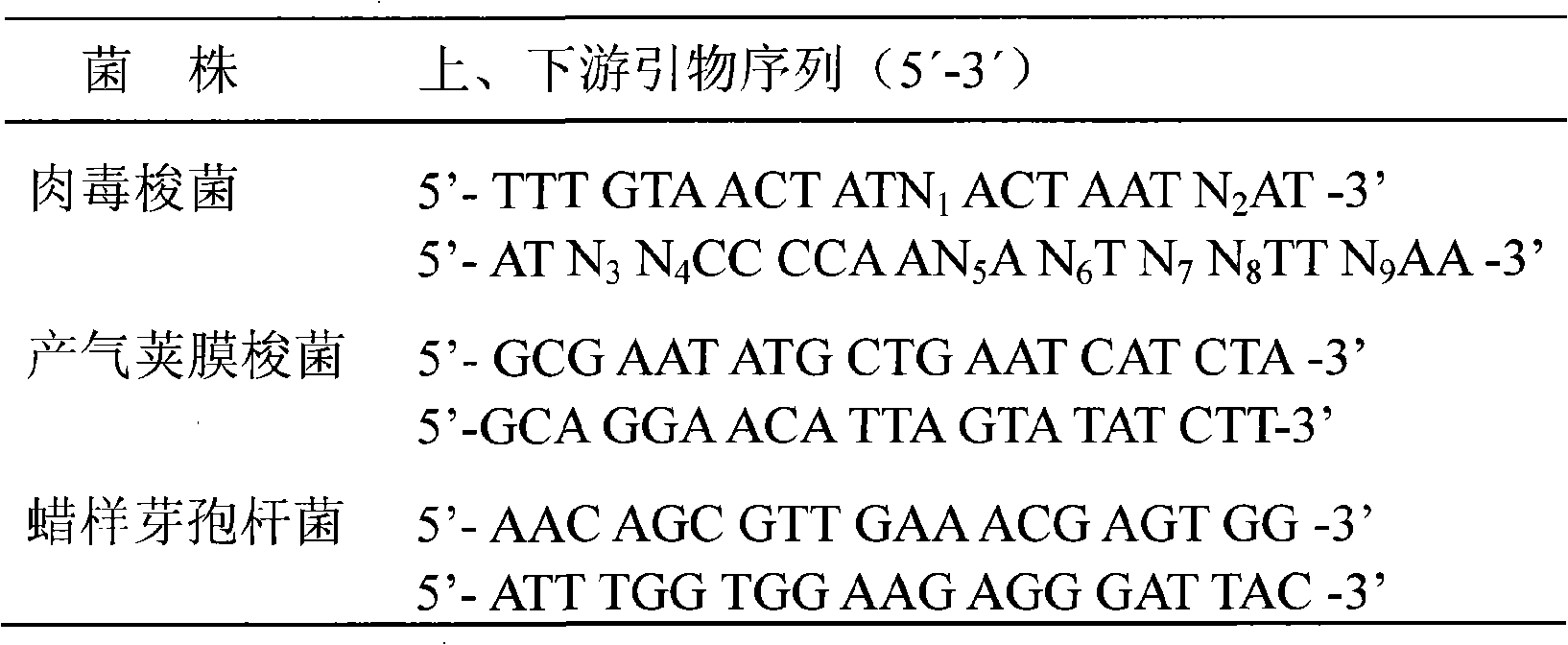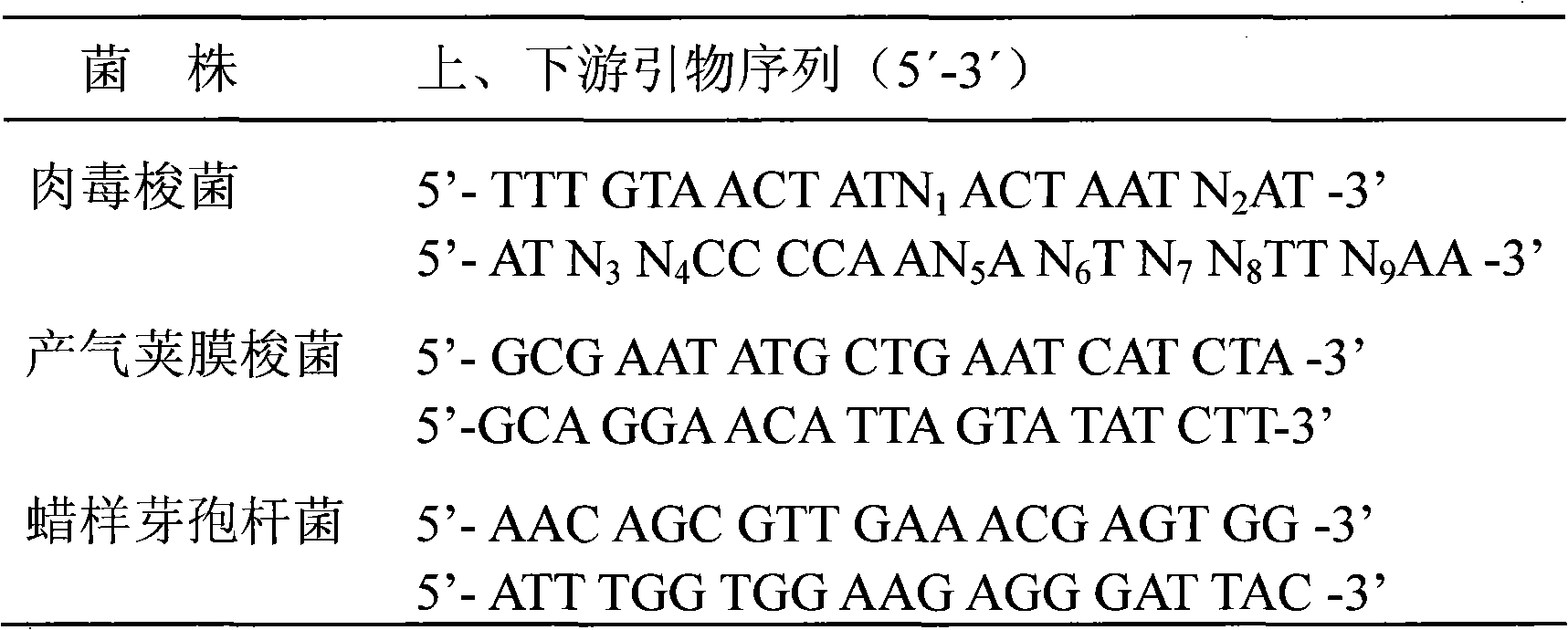Detection kit for detecting three spore production bacteria in food and detection method thereof
A technology for detection kits and detection methods, applied in the direction of microorganism-based methods, biochemical equipment and methods, measurement/inspection of microorganisms, etc., can solve problems such as unsatisfactory, single target, and affect the detection and identification cycle, so as to save labor and financial resources, simple operation, and short inspection time
- Summary
- Abstract
- Description
- Claims
- Application Information
AI Technical Summary
Problems solved by technology
Method used
Image
Examples
Embodiment 1
[0042] Embodiment 1, the establishment of the detection kit of three kinds of spore-forming bacteria in food and its detection method
[0043] (1) Design and synthesis of primers and assembly of kits:
[0044] The present embodiment determines that the primer sequences and amplified fragment lengths used for detection are shown in Table 2:
[0045] Table 2
[0046]
[0047] Among them, N 1 is A, T or C; N 2 is A or G; N 3 is C or T; N 4 is A or T; N 5 is A or T; N 6 is G or A; N 7 is C or T; N 8 is C or T; N 9 is C or T;
[0048] On this basis, a kit for mPCR-DHPLC detection was designed. The kit includes Taq DNA polymerase and PCR reaction solution at a concentration of 5U / μL; the PCR reaction solution contains 10mM Tris HCl, 50mM KCl, 25mM MgCl 2 2.5 mM each of dNTP (dATP, dGTP, dCTP and dTTP) and 10 μM each of the primer pairs of the three spore-forming bacteria in Table 2.
[0049] (2) The mPCR-DHPLC method using this kit to detect three kinds of spore-formin...
Embodiment 2
[0072] Embodiment 2, specificity test
[0073] Genomic DNA was extracted from all reference strains in Table 1 according to the method established in Example 1, and then using these genomic DNA as templates, mPCR-DHPLC was used to determine whether there were false positives and false negatives. The results show that the detection kit and the PCR-DHPLC detection method established in Example 1 have high specificity in detecting three kinds of spore-forming bacteria in food, and there are no false positive and false negative results. In order to confirm that the positive absorption peaks of the detected samples were fragments of the specific genes of Bacillus cereus, Clostridium botulinum and Clostridium perfringens, the positive absorption peak products of DHPLC were recovered and cloned and sequenced respectively. The results were compared with the DNA sequences of the three spore-forming bacteria, which proved that the positive absorption peaks of DHPLC were the specific gen...
Embodiment 3
[0074] Embodiment 3, the application in actual sample detection
[0075] (1) Keep positive sample test results
[0076] Using the mPCR-DHPLC detection kit and detection method for three kinds of spore-forming bacteria in food established in Example 1, the remaining positive samples were detected.
[0077] Take 2 positive strains of Clostridium botulinum isolated and retained from the actual test samples, and use the detection kit and detection method established in Example 1 to carry out the detection test. Results The positive amplification absorption peaks of the two Clostridium botulinum isolates were detected by DHPLC, and the peak time and peak shape reproducibility were good. The detection results of Salmonella as negative control were negative.
[0078] Take 3 remaining isolated strains of Clostridium perfringens isolated from the actual test samples, and use the detection kit and detection method established in Example 1 to carry out the detection test. Results The a...
PUM
 Login to View More
Login to View More Abstract
Description
Claims
Application Information
 Login to View More
Login to View More - R&D
- Intellectual Property
- Life Sciences
- Materials
- Tech Scout
- Unparalleled Data Quality
- Higher Quality Content
- 60% Fewer Hallucinations
Browse by: Latest US Patents, China's latest patents, Technical Efficacy Thesaurus, Application Domain, Technology Topic, Popular Technical Reports.
© 2025 PatSnap. All rights reserved.Legal|Privacy policy|Modern Slavery Act Transparency Statement|Sitemap|About US| Contact US: help@patsnap.com



